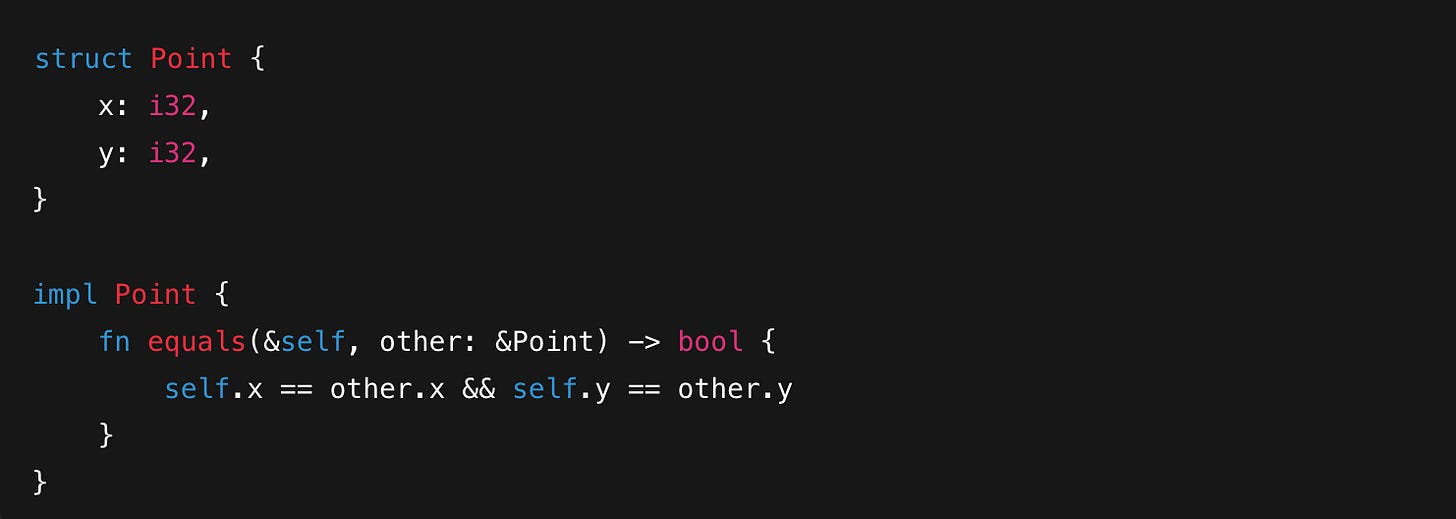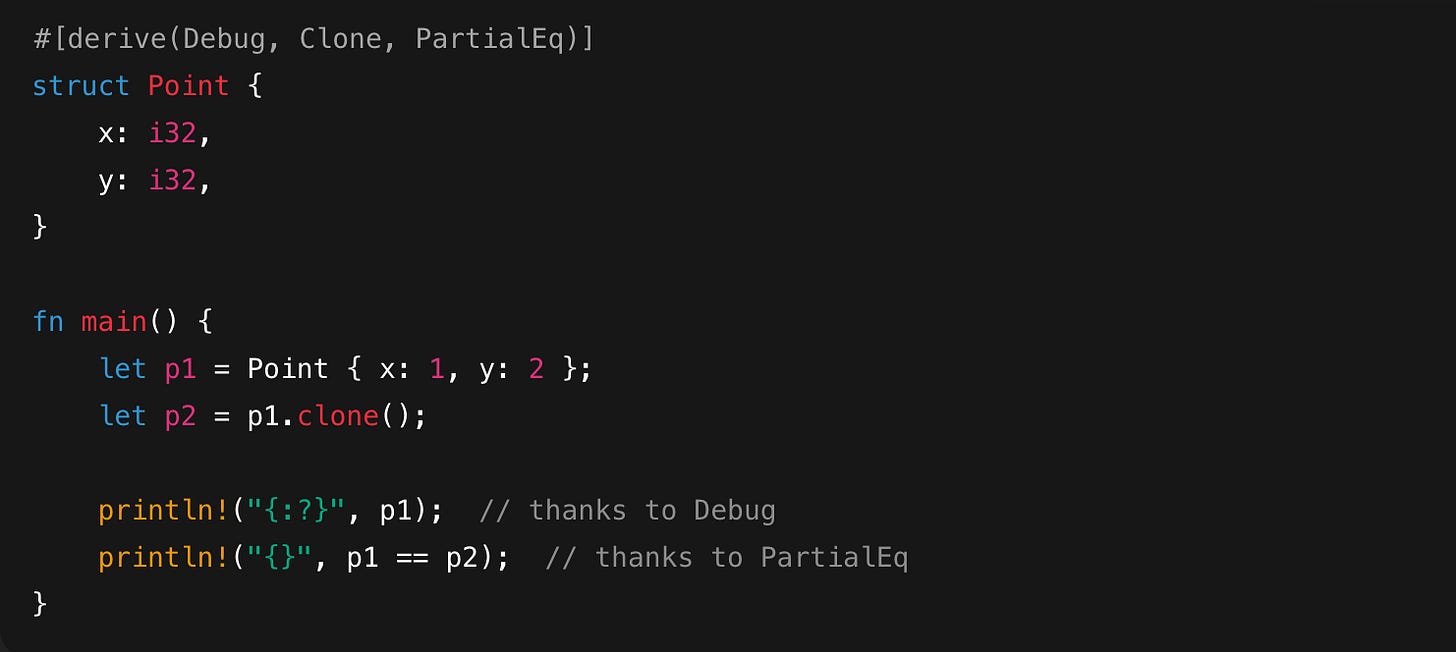If you’re new to Rust, you may have seen #[derive(...)] sitting above structs or enums and thought:
“What does that even mean?”
Let’s break it down step by step.
What is #[derive(...)]?
At its core, #[derive(...)] is a compiler instruction (attribute).
When you attach it to your type (a struct or enum), you are telling Rust:
“Hey compiler, please generate some extra abilities for this type automatically, so I don’t have to write all the boring code myself.”
Why do we need it?
In Rust, if you want a type to be:
Printable → so you can see its contents with
println!,Comparable → so you can check if two values are equal with
==,Cloneable → so you can copy it,
…you’d normally have to write all the supporting code yourself.
That’s repetitive, and it breaks the DRY (Don’t Repeat Yourself) principle.
Rust solves this with #[derive(...)].
Commonly Derived Abilities
Here are some of the most common things you can ask the compiler to generate:
Debug→ “Give me the ability to print this type withprintln!(”{:?}”, value).”Clone→ “Give me the ability to make a duplicate with.clone().”PartialEq→ “Give me the ability to compare two values with==.”
And these are all provided by Rust’s standard library, so you don’t have to reinvent the wheel.
Example Without Derive
Here, we had to manually write a method just to compare two Points.
Example With Derive
With a single line, we told Rust to auto-generate printing, cloning, and comparison for us.
TL;DR
#[derive(...)] is like asking Rust:
“Give this type some standard abilities (like printing, copying, comparing) without me having to spell out all the code.”
It saves time, reduces bugs, and keeps your code clean.




Sincerely I write literary fiction books. But your topic interest me. I once tried coding on termux buh it was a disaster